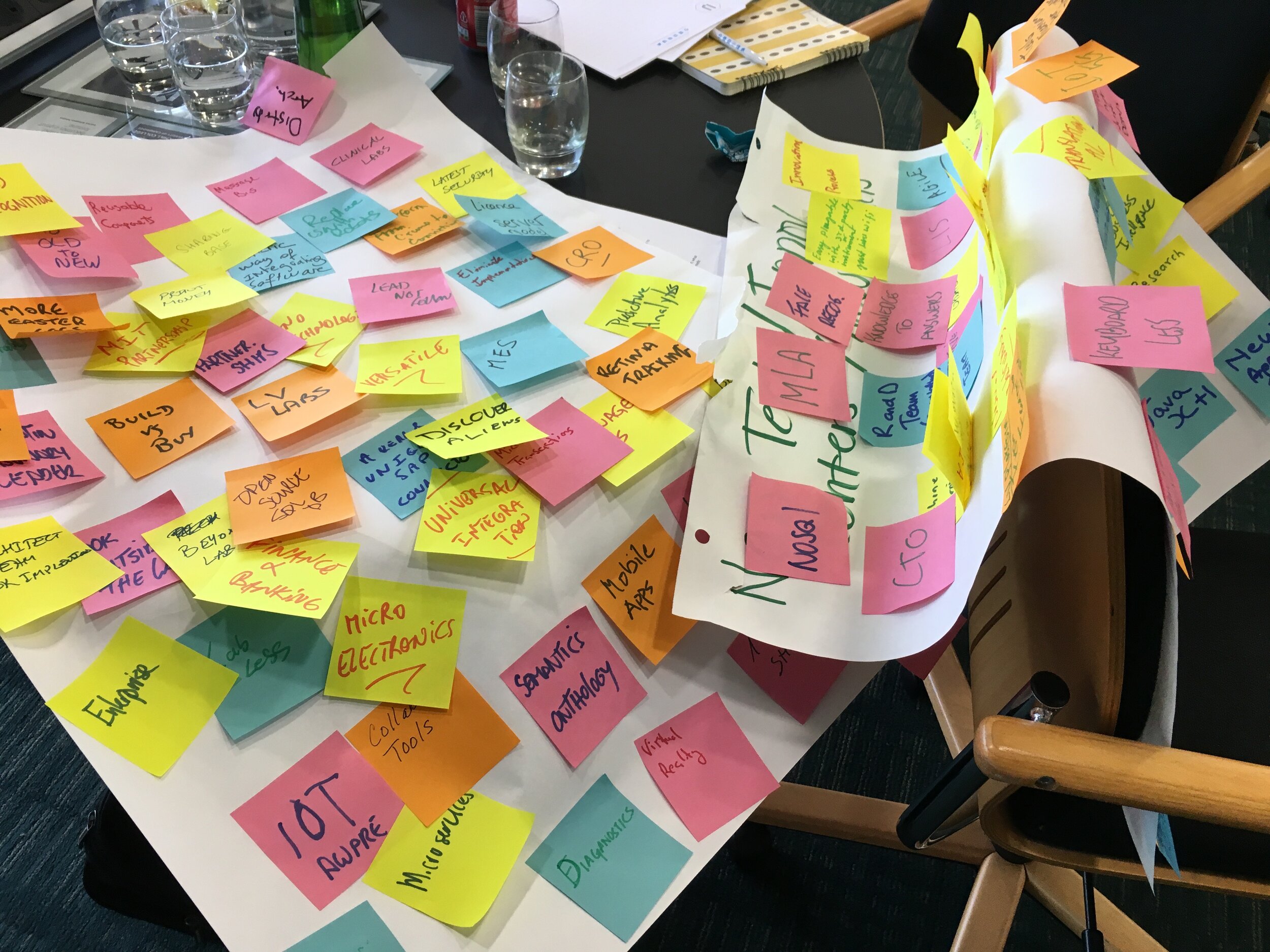
Appreciative Inquiry
A collaborative process for strategy development and organization change
People support what they help to create. If you have a must-succeed change initiative or need a visionary and actionable strategy, Appreciative Inquiry will be a better, smarter, faster path forward.
Much of the work I do—especially strategy and organizational change work—is informed by the Appreciative Inquiry (AI) process. AI is both a mindset and a method of human-centered design that helps people and organizations tackle strategic topics with a positive, collaborative, and future-focused orientation.
Origins of Appreciative Inquiry
Appreciative Inquiry was developed by David Cooperrider and Suresh Srivastva at Case Western Reserve University, in 1987. They defined AI as “the systematic study and application of what works – what gives life, health, and vitality to organizations when they are at their best in both human and economic terms.”
Not long after that, my mentor and professional collaborator, Dr. Jim Ludema, began his doctoral studies at Case Western. He became an early pioneer of the AI process, perfecting its uses for large scale change initiatives. The book he co-authored, The Appreciative Inquiry Summit, remains the seminal text on how to lead AI for groups, whether your group is 6 people around a single table or 6,000 spread across the globe.
The Appreciative Inquiry Process
The AI process takes participants through four distinct phases, called the 4D Cycle. First, the group selects a topic for the inquiry. This might be something like improving innovation, increasing sales, setting a 5-year strategy, updating the mission statement, or finding efficiencies in the supply chain process. Then, a facilitator helps your group work through the 4D Cycle.
Discovery: participants explore “the best of what is,” identifying the organization’s strengths, best practices, and sources of excellence, vitality, and peak performance.
Dream: participants envision a future they really want – a future where the organization is fully engaged and successful around its core purpose and strategic objectives.
Design: participants leverage the best of what is and their visions for the future to design high-impact strategies that move the organization creatively and decisively in the right direction.
Delivery: participants put the strategies into action, revising as necessary.
What does this look like in practice?
AI can be used in executive coaching with an individual, with small and medium-sized groups, or in organization-wide change initiatives for hundreds or thousands of people. It can be deployed in-person or virtually. The length of engagement varies from days to months to years, depending on the breadth and depth of the topics being explored and the number of people involved. Find three examples below.
Team Retreat
Innovation is lagging for your team, so you want to make it the focus of your fall retreat. You have six hours available. A facilitator helps your group work through exercises that discover when innovation has worked well in your organization. Together, you identify a set of characteristics that make innovation possible. Then your team begins to dream of a future where innovation thrives; together, you identify three initiatives that would help make this future possible. In working groups, you quickly design action plans for each of those initiatives, sharing your ideas with the larger team and refining them together. The day closes with time spent developing next steps, so you can be sure to deliver on these results.
Multi-Day Strategy Summit
Executives have made it clear: your division needs an aggressive plan to identify and open new markets over the next 3-years. You know building that plan will take the buy-in of your senior leaders, so you put a 3-day planning session on the calendar for your top 70 managers. During this summit, two facilitators help bring your team together. First, you ask the managers to interview each other, to discover their best ideas. Then, the facilitators walk the group through a series of energizing activities that help clarify the division’s strengths and move the team toward a shared vision, a dream, of the future. On Day 2, you divide into 10 action teams to design different elements of the dream; some groups work on solving logistical challenges while others build plans for totally new ways of working. On Day 3, we refine these plans then work to identify next steps, so you can deliver on the solutions. You’re surprised to find that you’re ending the summit not just with an actionable strategy, you also have a more aligned and engaged team.
Global Initiative
Your global organization plans to roll out a new product, but you know that without input from regional leaders you’re likely to make costly cultural or technical mistakes. You also need the buy-in from leaders around the world to give this product the traction it needs to succeed. With help from facilitators skilled in global leadership, you train 15 representatives on interviewing and send them out to talk with five regional leaders each. Through this process, you discover what is most important within each country. That discovery process shapes an overall agenda; you bring the 15 representatives together for a digital summit and ask them to help dream about the future. Together, you design an initial prototype for the new product. Next, you host one-day gatherings in three cities to bring global leaders together. Insights from these gatherings refine the prototype, allowing your team to create an action plan for delivery.
